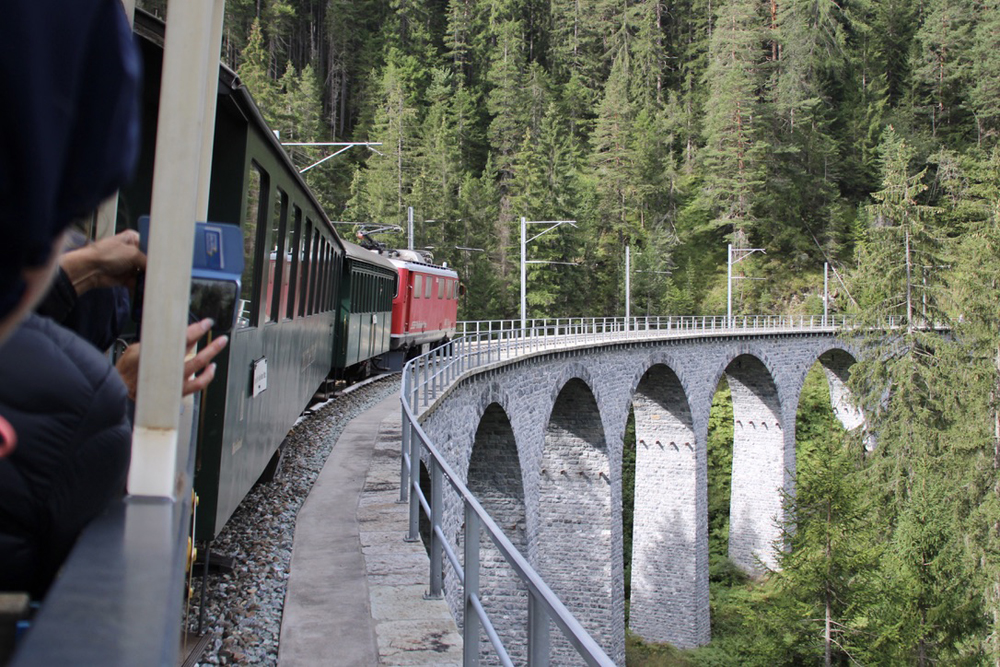
CHICAGO — Norfolk Southern’s experimental less-than-carload expedited boxcar service has been expanded and has won praise as an example of how railroads can take freight off highways.
The Thoroughbred Freight Transfer service — launched in July linking Chicago, Atlanta, and Miami — now includes lanes connecting Croxton, N.J., with Chicago and Atlanta, Ed Elkins, the railroad’s vice president of industrial products, told the North American Rail Shippers conference this month.
NS provides door-to-door service. Trucks pick up small loads and deliver them to a rail-served warehouse where the shipments are cross-docked into waiting boxcars. The boxcars then move in intermodal trains. The process is reversed at the destination, with trucks making the last-mile delivery.
Surface Transportation Board Chairman Martin J. Oberman, who has ratcheted up his criticism of Class I railroads this year, praised the Thoroughbred Freight Transfer experiment in a letter to NS CEO Jim Squires this week.
“While I know this service is starting off on a small scale, I congratulate NS on being creative in its efforts to expand its service and increase the shifting of freight from truck to rail,” Oberman wrote. “I am hopeful that your team will be successful in implementing this new service across your network and increasing its positive impact and can set an example for others to be creative and aggressive in finding new ways to serve existing and potential rail customers.”
Oberman toured Norfolk Southern’s Landers intermodal terminal and Calumet Yard in Chicago on Sept. 2 to learn more about how the railroad is handling intermodal traffic and the steps it is taking to alleviate international intermodal congestion.
“As you know, I have been emphasizing the importance of shifting freight from truck to rail, which I believe we all agree better serves the public with cleaner air and safer highways,” Oberman wrote. “This less-than-carload service also allows NS to maximize utilization of boxcars at a time when we are facing an international shortage of containers.”
The NS boxcar service, Oberman added, “is a welcome step in the right direction” as railroads work to alleviate pressure on the supply chain.

Elkins says the Thoroughbred Freight Transfer is a hybrid between intermodal and carload.
“It takes the two best parts of each. It takes the very predictable, high-quality service of the intermodal network. It doesn’t get humped. And it’s predictable within hours,” he says.
“And it takes what I would call the extraordinary payload capacity of a boxcar, coupled with technology that allows us to sell it in increments and build really a new product.”
But he stressed that the service remains an experiment to tap a market that could be worth $2 billion. The potential market for NS includes freight that’s heavy or odd sized, a segment that less than truckload carriers try to avoid.
“There’s a lot of freight out there that could move in this kind of service,” Elkins says. “And let me be clear: I don’t know if a year from now we’ll still be doing this experiment. We may be bigger, we may be smaller, we may not be doing it.”














Hub Group is in ‘truckload’ (via containerized intermodal), not LTL.
Large LTL truck lines run break bulks. Break bulks sort and route freight from various origins to various destinations. It is a labor and information intense process. Such is the nature of moving small shipments.
NS is going after point to point line haul. No cross dock to sort freight and move it from one box car to another box car going to another point.
When railroads were into less than carload freight there were huge cross dock operations at major points. For example railroads maintained large freight houses in Chicago. Box cars of LCL freight from other lines, or the carrier’s own line, was sorted and sent in box cars to various destinations in North America.
If railroads get back into the business they will probably stick to line haul.
Break bulk? Today’s younger railfans probably never heard the word “team track” where “team” meant horses, but horses became trucks. A carload of bricks or cement or whatever would be spotted on a siding next to a road. Teamsters or later truckers would take part of the load until the railcar was empty.
I once read in TRAINS-MAG that bananas would be handled that way, sort of. A railcar of bananas would be loaded at the steamship docks at ports like New Orleans. The railcar would be sent generically inland, while the banana forwarder peddled the moving load and so determined where it was going to.
Truckers have the labor and information systems needed for break bulk. Railroads can barely handle a full carload anymore.
The project could become a facsimile of Railway Express Agency. Many secondary passenger trains had high headend car ratio with express shipments. Southern Railway downgraded two of its streamliners, the Washington – Memphis ‘Tennessean’ and the Cincinnati – Jacksonville ‘Royal Palm’ to secondary status for a high volume of express shipments. Amtrak ventured into the express market in the 1990s only to abandon it and sell the box cars.
This isn’t something new, the railroads provided excellent LCL and Fast Freight service for many years, until they wanted to cut jobs, and also do away with the Railway Express System. This follows the same pattern as trolleys, and light rail.
Railway Express died with passenger trains as stations were closed and trains were eliminated. An interesting book on REA was ‘Turtles to Tucumcari.’
Robert, freight forwarding is still very much alive. Note the number of “Hub Group” containers in NS’s trains, as well as others. I used Hub Group years ago to ship from NC to CA; they were great to work with, and the speed and cost were both truck-competitive..
So if Hub Group is already in the LTL- COFC biz, why the proposed new service from NS?
In Brightline’s revenue projections they had a line item for “express freight or parcels”. So an Amazon/FedEx/UPS could do a drop in Orlando for an express headed to Miami through a lockbox on the side of one of the cars. Once the train arrives at Miami Central, the truck that checks all the station dropboxes comes over and opens it just like any other dropbox, grabs the bag and moves on. The revenue wasn’t very large if memory serves, but I thought it was an ingenious way of Brightline looking for non-fare revenue. Kind of like USPS and the way they use Southwest Airlines for their Express Mail service.
If the LTL or express parcel rates are low enough, I could easily see compartments in high speed passenger rail cars for this type of traffic, just like airlines do in the luggage hold.
Back to the Southern Railway way of thinking just making full circle.
I’m certainly no expert on freight forwarding or consolidating LTL or LCL … Permit me though to offer a comment. This NS service reminds me of RoadRailer – a small number, a very limited number, of service lanes. Whereas freight wants to go from everywhere to everywhere.
Yeah, couldn’t they almost do the same thing by having RoadRailers go around to a few customers and pick up loads then get assembled in a intermodal yard and added to the rear of an IM train?
That would eliminate the trans-dock warehouse and all the additional time and expense involved with it.
A reimagined Roadrailer service would be a lot more efficient I would think.
Or, just having the standard TripleCrown TOFC trailers ‘fill out’ a train on cars that are, you know, permitted to travel at intermodal train speeds…
The reason you need to cross dock is to consolidate destinations and equipment efficiency. First, you don’t really want to send a 53 foot trailer out to get LTL freight. Far too cumbersome. Next, if they’ve got three destinations, you don’t want to send one truck to 100 Elm street for a pallet going to Atlanta, then another truck to 102 Elm street for a pallet going to Miami. In LTL freight you want one truck getting as much as you can, sort it out on the dock. Also, you can’t really make LTL work with a “few” customers, you need as many as possible. My question is why not sell this idea to your TOFC customers? Instead of loading four pups on flat cars, transfer them into a box car?
Maybe maybe not. You are working with limited markets. If you have the “Miami-Atlanta” truck go around Miami picking up loads until it’s full and then when it gets to Atlanta it delivers it’s loads to all accepting customers. The “Miami-Chicago” truck does the same for it’s customers. Yeah you might have different trucks picking up loads at nearby locations or even from the same location, but there is no cross-docking or intermediate warehousing involved. It seems like that would be super efficient if you can generate enough loads for each destination. It’s more like Precision Trucking 🙂
What you describe is pretty much what FedEx and UPS (and others) do. Collect small loads at the door-to-door level using smaller trucks, bring all those trucks to a central sorting facility, and sort and consolidate all those packages into containers going to destinations, then reverse the process. The main difference appears to be the relative size of the individual “packages” the railroads are collecting door-to-door.
What is ironic is that railroads (at least the Pennsylvania Railroad) used to provide this service until the 1920s or maybe into the 1930s. However, the service was deemed an unfair competition with truckers and regulators forced them out of it.
‘Trains’ has several times in the past reported that current rates on boxcar traffic do not justify investment in new boxcars. As the current boxcar fleet gets to its scrap date how many boxcars will still be available? Will they be transloading into containers in the future?
This service also seems to replicate what freight forwarders used to do: aggregate a lot of small shipments into boxcar loads. Freight forwarders I believe have mostly disappeared because of the nationwide spread (after deregulation) of large LTL trucking companies and the expansion of the Interstate highway network which expedited trucking traffic.
How does it compete with an LTL trucking company putting its trucks/containers on a train?